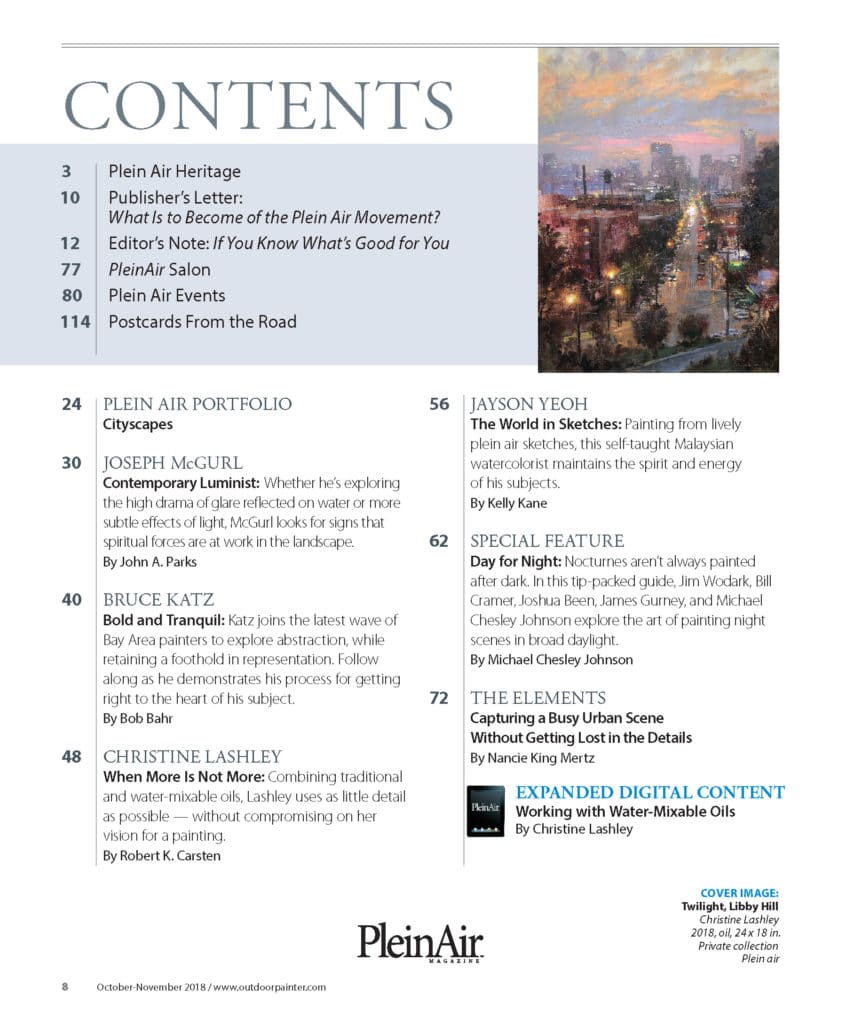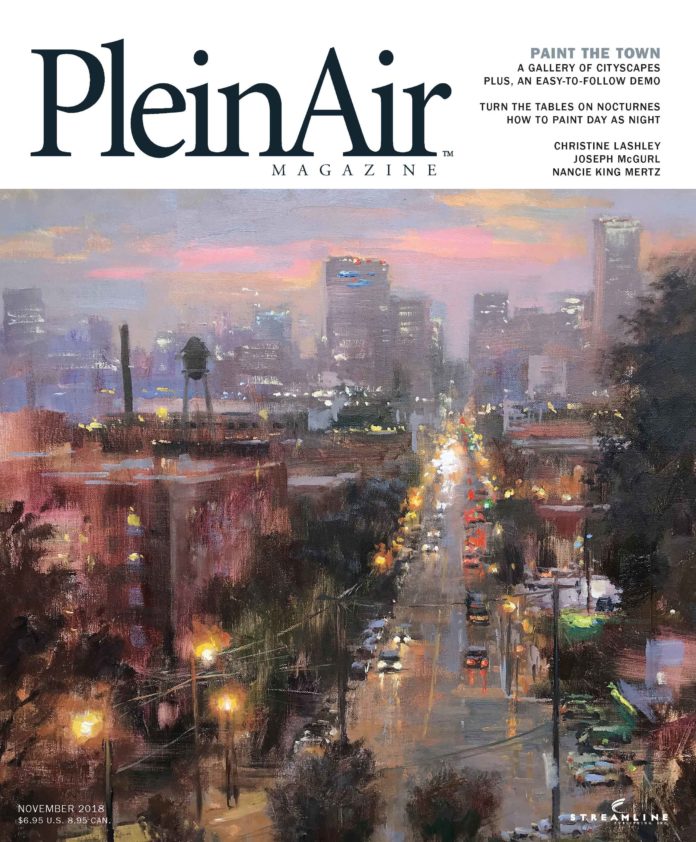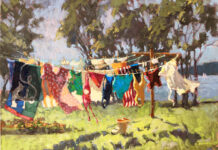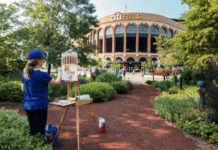Plein Air magazine October/November 2018, Editor’s Note:
By Kelly Kane
There’s no one path to becoming a successful artist (and by successful, I don’t just mean financially). Whether you studied art in school, have taken workshops with your favorite painters, or are developing your skills through books, magazines, and videos, you have to put in the time if you want to improve. This issue is bursting with examples of how your fellow artists have made that kind of commitment to their art.
Like many, Jayson Yeoh finds making time for painting can sometimes be difficult. Still, he strives to get outdoors as much as possible. And when he doesn’t have two to three hours to complete one painting on location, he sketches. With energetic linework and an attention to composition, spatial relationships, and rhythm, he can capture several scenes in the same amount of time and have everything he needs to complete paintings that have the same energy and excitement back in the studio.
In The Elements column, Nancie King Mertz (listen to Mertz on the PleinAir Podcast) reveals that she often paints with a local plein air painting group, the Plein Air Painters of Chicago, who meet every Saturday morning at a different location around the city. Look for a similar group in your area, or start one of your own with a few like-minded friends. It’s a great way to share the experience, push yourself to explore new subject matter, get feedback from fellow artists, and help spread awareness of plein air painting in your community.
In “When More Is Not More,” cover artist Christine Lashley also touts the benefits of putting yourself out there, in her case by participating in plein air and quick draw events. The time constraints and competitive nature of these contests challenge you to look at your subject and your process in new ways, often leading to simpler, more powerful expressions of your
vision. She confesses that she was nervous before her first event, but she went in prepared and surprised herself by winning a prize. Lucky for you, she shares her five best tips for participating in a quick draw that will give you the advantage should you try one yourself.
Another great thing you can do for your art is study the work of other artists you admire and gain an understanding of where you fit in stylistically, aesthetically, and ideologically with those who have come before. In the article on his work, Bruce Katz describes how he’s drawn inspiration from several masters whose work he reveres. From one, he simply took a reminder to look for the less obvious subject; from others, he adopted aesthetic preferences. Filtering all of it through his personal vision and individual way of working, he developed a style that’s distinctly his own. Joseph McGurl has done the same, finding a philosophical kinship with 19th-century Luminists (learn about McGurl’s painting workshop DVD here).
What all of these artists have in common — the trait we all share — is an appreciation for nature and a love of the outdoors, which provides one final benefit of committing to your plein air practice: Being outside is good for you. Sunlight floods your body with vitamin D, improving your mood and helping you sleep better at night. Being in nature has been proven to reduce stress and improve concentration. Stepping away from the pressures of your everyday life frees you up to be more creative, and better equipped to deal with those stresses.
Now that you know what’s good for you, I hope you’ll make that commitment to your art — and yourself.
Plein Air magazine, October/November 2018 Table of Contents:

Get your copy of the October/November 2018 issue of PleinAir Magazine — available on newsstands until late September — or subscribe here so you never miss an issue.




